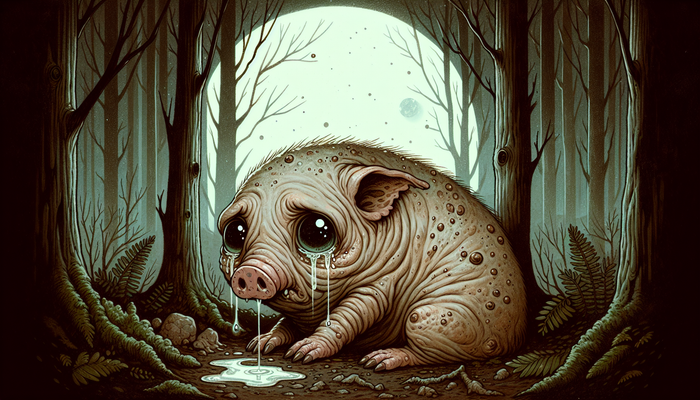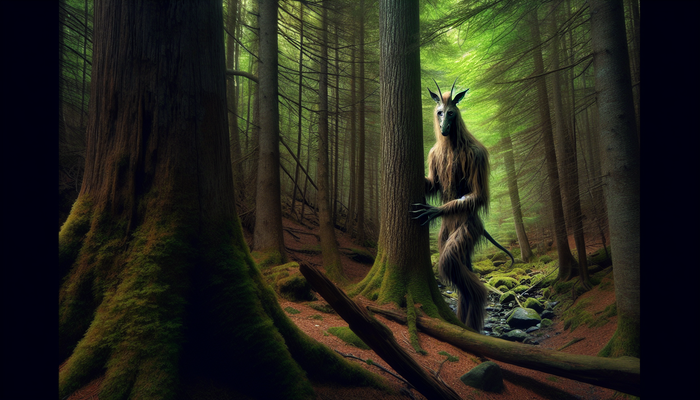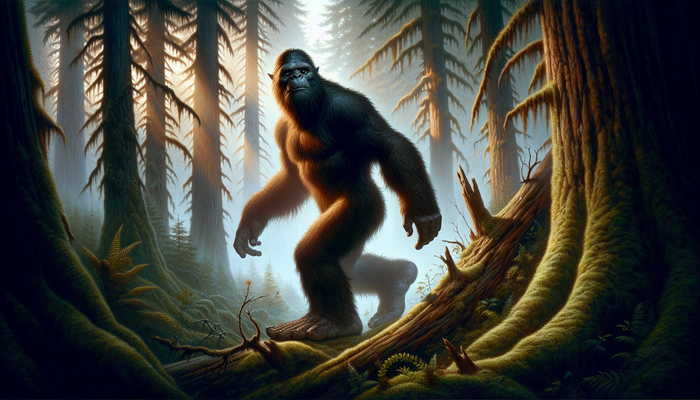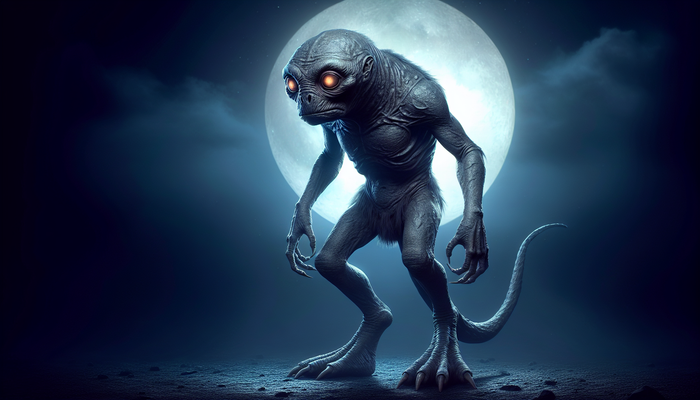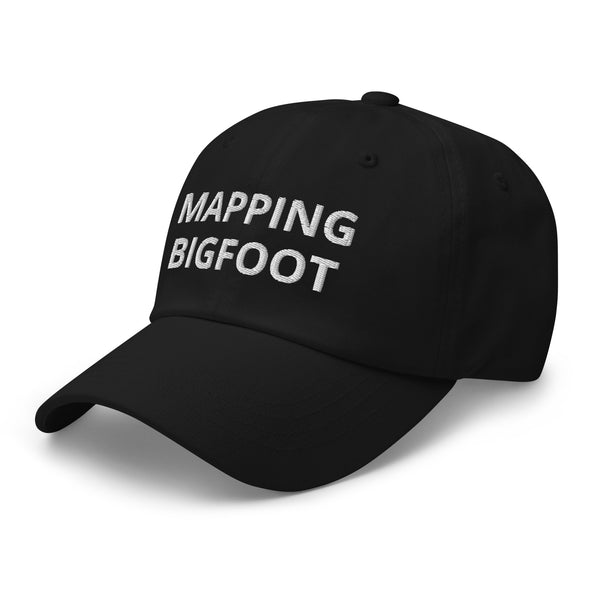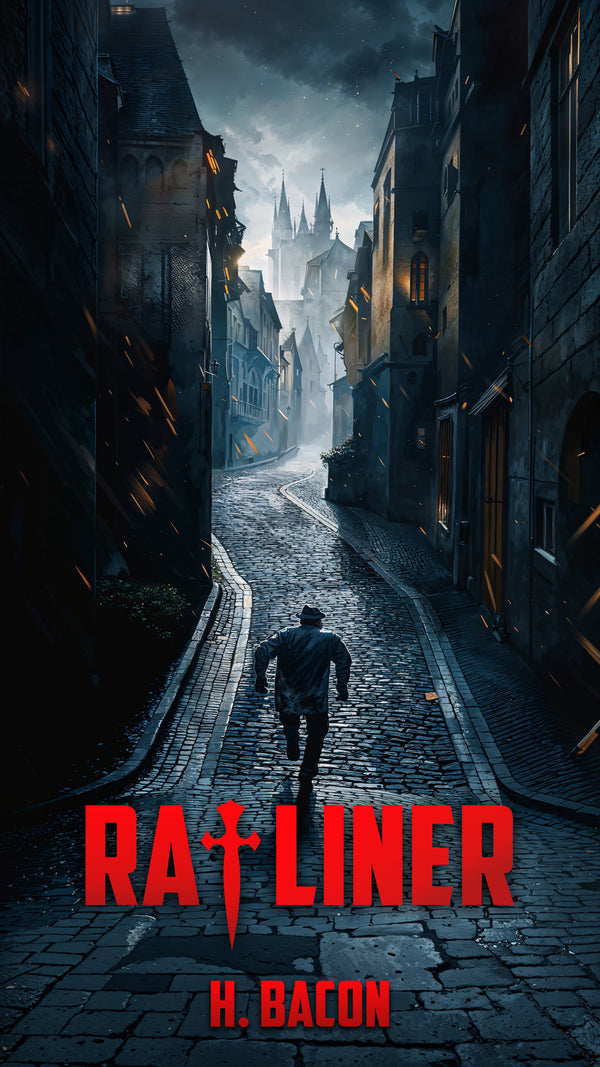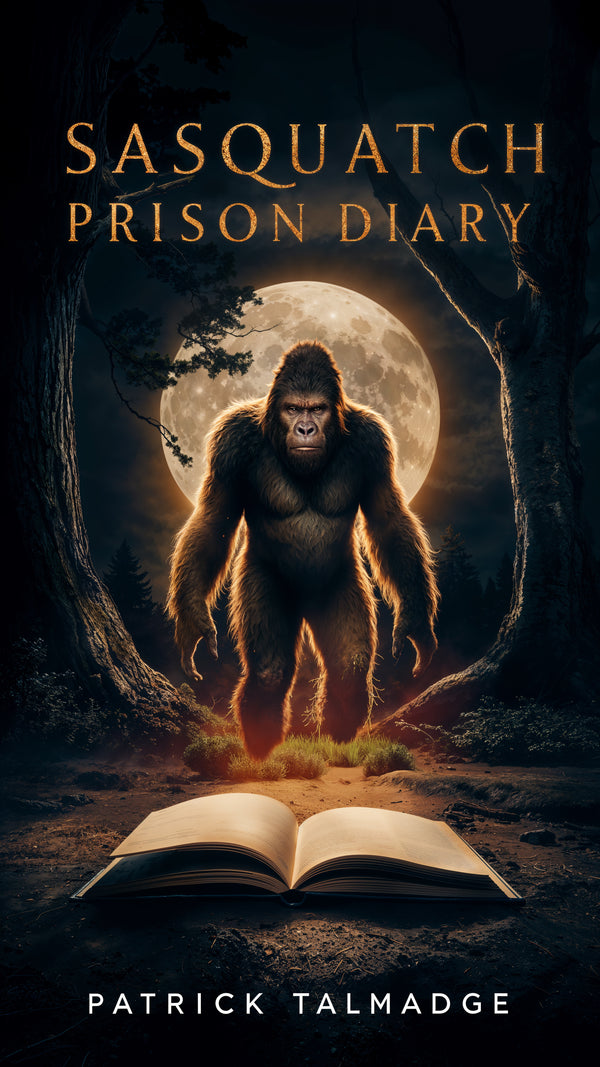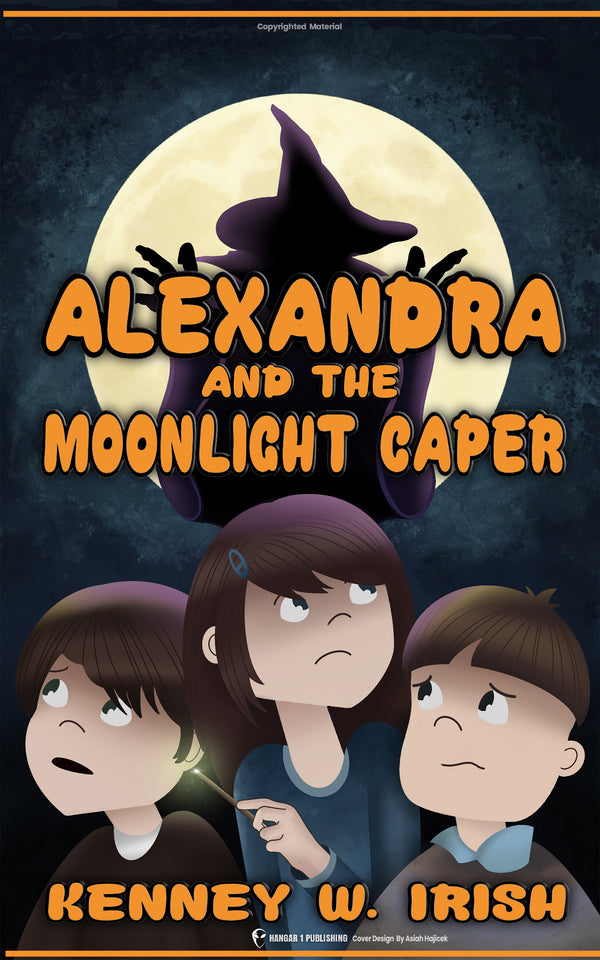Legends of Louisiana Cryptids
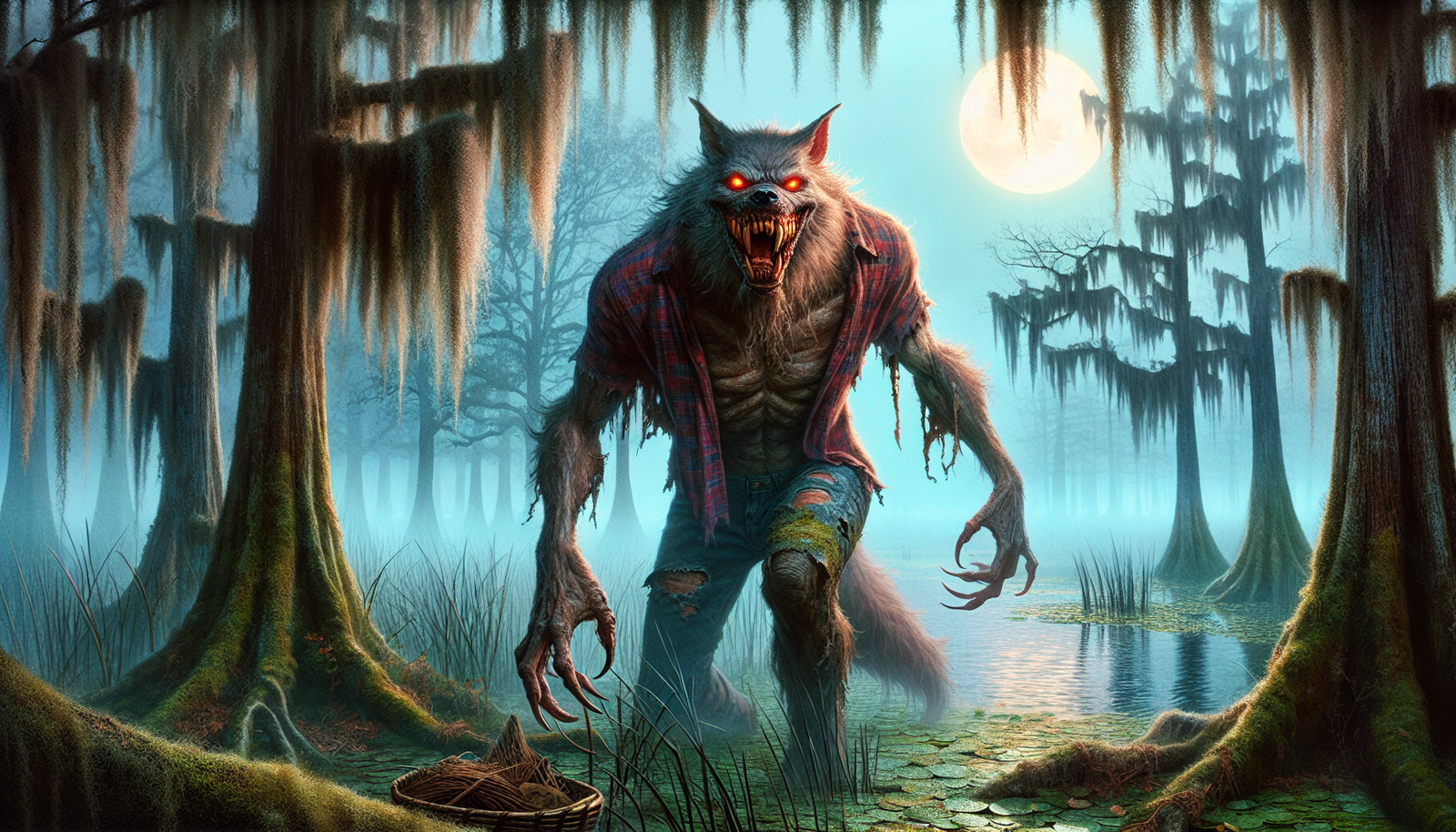
By Wade Beaumont, Cryptozoologist and Park Ranger
Louisiana: A State Steeped in Mystery and Folklore
Folks, let me tell you, there ain't no place quite like Louisiana when it comes to rich history, vibrant culture, and downright fascinating folklore. This state's got a certain kind of magic that seeps into your bones and sets your imagination running wild. And nowhere is that more apparent than in the tales of mysterious creatures known as cryptids that lurk in the swamps, bayous, and even the cities of this here state.
Now, I've been studying these elusive and enigmatic beings for a long time, and I can tell you, the legends, sightings, and theories surrounding them are enough to make your hair stand on end. But that's exactly what draws me to them - the thrill of the unknown, the possibility that there might be something out there that defies explanation. So, buckle up and join me on a journey through the chilling world of Louisiana cryptids.
The Iconic Rougarou: Louisiana's Cajun Werewolf
First up, we've got the Rougarou, Louisiana's very own Cajun werewolf. This beast's got roots that go all the way back to medieval French folklore, where it was known as the loup-garou. But like many things in Louisiana, it evolved and adapted to the unique environment here, becoming something entirely its own.
The Rougarou is usually described as having a man's body with a wolf or dog's head, complete with glowing red eyes and sharp fangs that could tear you to shreds. Some say it's a shapeshifter, able to transform from human to beast at will. Others link it to Catholic traditions, claiming that if you break Lent for seven years straight, you'll be cursed to become a Rougarou yourself.
Growing up, Cajun kids would hear cautionary tales about the Rougarou, warning them to behave or else this fearsome creature would come for them in the night. And even today, sightings of the Rougarou persist, keeping the legend alive and sending shivers down the spines of those who dare to venture into its territory.
The Elusive Honey Island Swamp Monster
Next, we've got the Honey Island Swamp Monster, a cryptid that's made its home in the dense, murky swamps of St. Tammany Parish. The first reported sighting of this creature dates back to 1963, when a man named Harlan Ford claimed to have spotted it while out fishing.
According to Ford, the monster was large and bipedal, covered in gray hair, with glowing eyes and a stench that would knock you flat. But what really got folks talking were the unusual footprints it left behind - three-toed and webbed, like nothing anyone had ever seen before. Some started speculating that maybe this thing was some kind of chimpanzee-alligator hybrid, cooked up in the depths of the swamp.
In the 1970s, Ford and his buddy Billy Mills claimed to have found a wild boar that had been torn to shreds by the monster, and they even made plaster casts of its footprints. Eyewitness accounts poured in, describing a creature that stood seven feet tall and weighed around 400 pounds. There was even some film evidence, though it was pretty inconclusive.
But let me tell you, the Honey Island Swamp Monster's become a real star in the world of cryptozoology. Folks just can't get enough of this elusive beast, and it's not hard to see why. There's something about the idea of a creature that can survive in one of the harshest environments on earth that captures the imagination and refuses to let go.
The Grunch: New Orleans' Shadowy Cryptid
Moving from the swamps to the city, we come to the legend of the Grunch, a creature that's said to haunt the streets of New Orleans, particularly around the infamous Grunch Road. This tale goes back to the early days of the city's settlement, when a group of albino dwarves supposedly retreated into the woods to live in isolation.
As the story goes, years of inbreeding led to the Grunch becoming more and more deformed and less human-like. They're described as having sharp teeth, goat legs, and all sorts of abnormalities that would make your skin crawl. The Grunch are said to hide in the tall grass, waiting to prey on unsuspecting teenagers who make the mistake of parking on Grunch Road.
One of the creepiest parts of the legend is that the Grunch supposedly use injured goats to lure people out of their cars. Once the poor sap steps out to help the animal, the Grunch attack, draining their blood and devouring them whole. It's the stuff of nightmares, I tell you.
Now, there's no hard evidence to support the existence of the Grunch, but that doesn't stop the legend from persisting. There's something about the idea of these twisted, malformed creatures lurking in the shadows of the city that just gets under your skin and stays there.
The Parlangua: Serpentine Mystery of the Swamps
Heading back out into the swamps, we've got the Parlangua, a massive, serpentine creature that's said to inhabit the Atchafalaya Basin. This thing is often compared to the Loch Ness Monster, with eyewitness accounts describing a long, slender body, a reptilian head, and humps or coils that protrude from the water.
Some say the Parlangua has the power to hypnotize its prey, luring them in close before striking. There have been sightings reported by fishermen and hunters dating back to the early 20th century, and some even blame the creature for mysterious disappearances in the area.
Despite numerous expeditions and investigations, no one's been able to find any concrete proof of the Parlangua's existence. But that doesn't stop the legend from enduring, passed down from generation to generation as a reminder of the secrets that the swamps still hold.
The Merbeing: Prehistoric Cryptid of the Gulf
Moving from the swamps to the sea, we come to the legend of the Merbeing, a creature that's said to inhabit the waters of the Gulf of Mexico off the coast of Louisiana. This cryptid is often described as a humanoid with fish-like characteristics, bearing a striking resemblance to the mermaids of folklore.
Sightings of the Merbeing go back centuries, with Native American tribes and European explorers alike claiming to have encountered these mysterious creatures. Some describe them as having human-like upper bodies with fish tails, while others say they're covered in scales and have webbed hands and feet.
Now, most scientists would dismiss the idea of the Merbeing as pure fantasy, but there are some cryptozoologists out there who think these creatures could be some kind of undiscovered species, maybe even a remnant of an ancient aquatic primate. It's a wild theory, but hey, stranger things have happened.
Regardless of whether the Merbeing is real or not, there's no denying that it's become a fascinating part of Louisiana's cryptid folklore. The idea of these mysterious, half-human creatures lurking beneath the waves has captured the imagination of people for generations, and it's not hard to see why.
The Altie (Altamaha-ha): Serpentine Swamp Dweller
Next up, we've got the Altie, also known as the Altamaha-ha, a serpentine cryptid that's been spotted in swamps and rivers all over the southeastern United States. But Louisiana seems to be a real hotspot for Altie sightings, with reports dating back to the early 1800s.
The Altie is usually described as being anywhere from 10 to 30 feet long, with a body that resembles a giant eel or snake. Some say it has a head that looks like a cross between a snake and a horse, with bulging eyes and a mouth full of sharp teeth. Not exactly the kind of thing you'd want to run into on a fishing trip, that's for sure.
There have been plenty of eyewitness accounts over the years, from Native American tribes to early settlers, all describing a massive, serpentine creature that's unlike anything they've ever seen before. Even in more recent times, folks claim to have spotted the Altie swimming in the murky waters of the swamps, leaving behind wakes and disturbances that can't be easily explained.
Some think the Altie could be some kind of prehistoric species that managed to survive into the modern day, like a plesiosaur or a mosasaur. Others say it's probably just a case of people misidentifying known animals, like alligators or giant catfish. But where's the fun in that?
The Skunk Ape: Southern Sasquatch
Moving on to a cryptid that's a bit more on the hairy side, we've got the Skunk Ape, a creature that's often referred to as the southern cousin of Sasquatch or Bigfoot. The Skunk Ape gets its name from the pungent, skunk-like odor it's said to emit, which I can only imagine is just delightful.
Sightings of the Skunk Ape have been reported all over the southern United States, but Louisiana seems to be a favorite stomping ground for this elusive beast. Eyewitnesses describe a large, bipedal primate that stands between 6 and 8 feet tall, covered in dark, shaggy hair. Some even claim that the Skunk Ape has a reddish tinge to its fur, setting it apart from its more famous cousin.
One of the most talked-about Skunk Ape sightings in Louisiana happened back in 2000, when a group of hunters in the Honey Island Swamp claimed to have encountered a large, ape-like creature that reeked to high heaven. They even managed to get a few seconds of video footage, which of course sparked a whole new wave of interest in the legend.
But despite numerous investigations and expeditions, no one's been able to find any hard evidence that the Skunk Ape actually exists. Skeptics say that sightings can probably be chalked up to misidentified bears or feral hogs, or even just good old-fashioned hoaxes. But for those who believe, the dense swamps and forests of Louisiana provide the perfect hiding spot for a creature that doesn't want to be found.
The Cajun Werewolf Doll: A Cursed Figurine
Now, here's a cryptid legend that's a little bit different from the rest - the Cajun Werewolf Doll. This story comes from the small town of Church Point, where locals tell of a strange, hand-crafted figurine that's said to be imbued with dark, supernatural powers.
According to the legend, the doll was created by a powerful Cajun witch or traiteur, using materials like moss, twigs, bones, and a small, red felt heart. The doll is said to have the ability to transform into a werewolf-like creature under the light of a full moon, and whoever possesses it is granted the power to control the beast.
But as with most things involving dark magic, there's a catch. The doll is also said to be cursed, and those who use its power for evil will eventually fall victim to the very creature they sought to control. It's a classic cautionary tale about the dangers of meddling with forces beyond our understanding.
While the legend of the Cajun Werewolf Doll may not be as well-known as some of Louisiana's other cryptid tales, it's still a fascinating example of how folklore and superstition can blend together to create something truly unique. The idea of a small, seemingly harmless object holding such dark and powerful secrets is the stuff of nightmares, and it's the kind of story that sticks with you long after you've heard it.
The Grunch and Marie Laveau: Voodoo and Hoodoo Intersections
Louisiana's cryptid legends often intersect with the state's rich history of voodoo and hoodoo practices, and nowhere is that more apparent than in the legend of the Grunch. According to some tales, this creature was actually created by none other than Marie Laveau, the infamous Voodoo Queen of New Orleans.
The story goes that Laveau created the Grunch as a way to protect the city from evil spirits and malevolent forces. The creature is described as a small, goblin-like being with sharp claws, glowing red eyes, and a penchant for lurking in the shadows. Some say that the Grunch is actually a physical manifestation of Laveau's own power, a supernatural guardian that continues to watch over New Orleans to this day.
Sightings of the Grunch are rare, but those who claim to have encountered it describe a feeling of intense dread and unease, as if the very air around the creature is charged with a dark, mystical energy. Whether the Grunch is truly a creation of Marie Laveau or simply another tale in Louisiana's rich tapestry of folklore, there's no denying that it serves as a powerful reminder of the enduring influence of voodoo and hoodoo in the state's cultural heritage.
The Letiche: Colonial History and Folklore Intertwined
Another fascinating example of how Louisiana's cryptid legends often blend with the state's history is the tale of the Letiche, a creature said to inhabit the swamps of St. Martin Parish. This legend is deeply rooted in the colonial era, with ties to the Native American tribes that once called the area home.
According to the story, the Letiche is the spirit of a young girl who was abandoned in the swamps by her mother, a member of the Attakapas tribe. Unable to survive on her own, the girl was taken in by a family of alligators, who raised her as one of their own and taught her the ways of the swamp.
As the girl grew older, she transformed into a fearsome creature, half-human and half-alligator, with scaly skin, razor-sharp claws, and a hunger for human flesh. The Letiche is said to lurk in the depths of the swamps, waiting to prey upon anyone foolish enough to venture into her domain.
Some versions of the legend suggest that the Letiche is actually the spirit of the girl's mother, cursed to roam the swamps as punishment for abandoning her child. Others see the creature as a manifestation of the Attakapas tribe's deep connection to the land and its creatures, a reminder of the consequences of turning one's back on nature.
Regardless of its origins, the legend of the Letiche has become an integral part of Louisiana's folklore, passed down from generation to generation as a cautionary tale about the dangers of the swamps and the importance of respecting the natural world. It's a story that speaks to the power of folklore to shape our understanding of the past and to connect us to the land we call home.
The Fifolet: Ghostly Lights of the Swamps
No discussion of Louisiana's cryptid legends would be complete without mentioning the Fifolet, a ghostly light said to flicker and dance through the swamps and bayous of the southern part of the state. The Fifolet is often described as a small, glowing orb, similar in appearance to a will-o'-the-wisp or a fairy light.
The legend of the Fifolet is believed to have its roots in a blend of African, Native American, and European folklore, with each culture contributing its own unique twist.
From Bigfoot to UFOs: Hangar 1 Publishing Has You Covered!
Explore Untold Stories: Venture into the world of UFOs, cryptids, Bigfoot, and beyond. Every story is a journey into the extraordinary.
Immersive Book Technology: Experience real videos, sights, and sounds within our books. Its not just reading; its an adventure.


